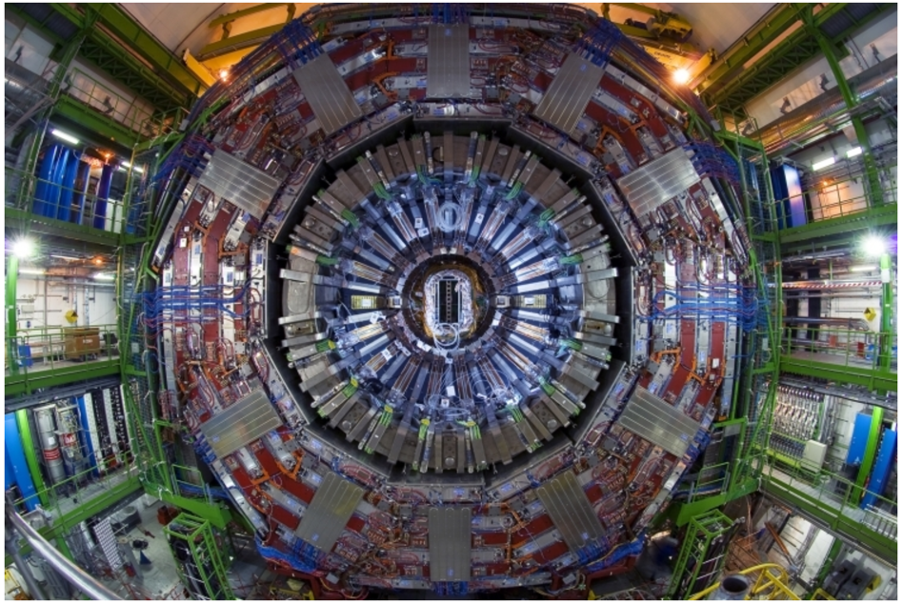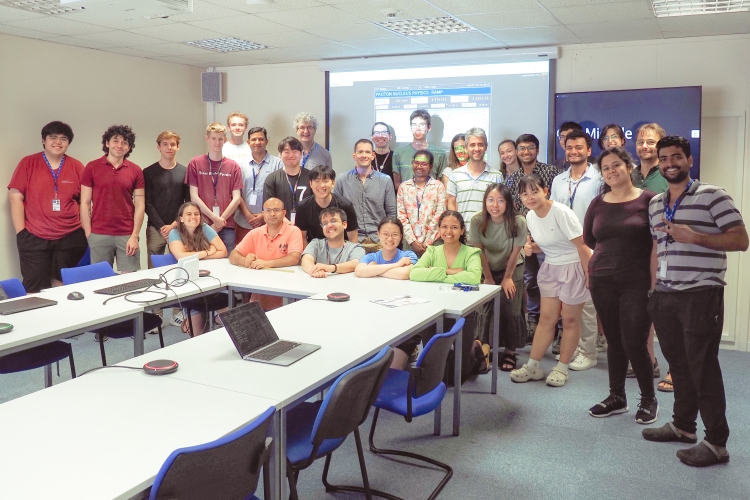
This year, the LHC is colliding more than protons and lead ions: oxygen and neon have also made it into the collider, and are being studied by CMS and the other LHC experiments in order to understand the early universe!
This is the first time that oxygen and neon ion collisions are being studied at the LHC. In past years, lead, and xenon nuclei have been accelerated through the LHC and their collisions studied, but never oxygen or neon. The purpose is to understand the behaviours of nuclear matter at the highest densities and temperatures.
The collisions have just started and will continue until the end of the week in an incredibly packed schedule.
“At the moment there are only theories on how these systems should react at these energies,” says Ivan Amos Cali, part of the CMS Heavy Ions group who will primarily study the collisions, “this is the first time we will actually get to see what happens – nobody has ever made this type of measurement!” Some of the team is pictured above.
There are three types of collisions taking place over the next week: protons colliding with oxygen nuclei, oxygen colliding with oxygen, and neon colliding with neon.
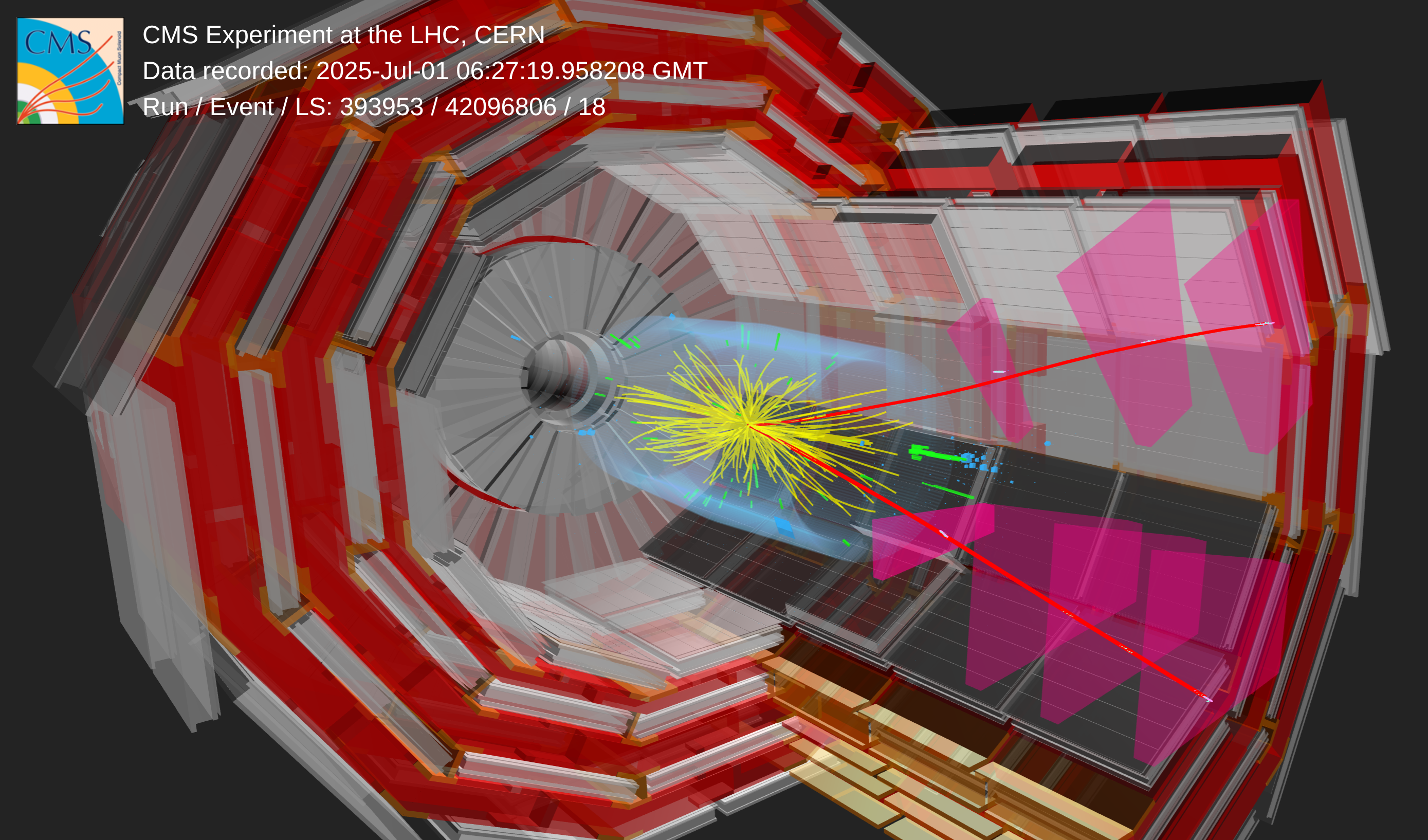
ABOVE: Event display from one of the first collisions of protons with oxygen nuclei. [Credit: Tom McCauley] [Find it here in the CERN archive, and an interactive version here]
Physicists are studying phenomena related to quark-gluon plasma, a hot, dense soup of particles believed to have existed within 1 microsecond after the Big Bang and before individual atoms formed. In this state, the fundamental particles making up protons and neutrons – quarks and gluons – are not constrained by the strong force that usually binds them together to make up our normal, everyday matter.
It is this much freer state of quarks and gluons that is so interesting for our researchers. By studying the quark-gluon plasma created by these collisions, scientists can further our understanding of these very unique conditions and how matter reacts in them, investigate the strong nuclear force, and test our best particle physics and cosmological theories.
Quark-gluon plasma can be created by colliding heavy ions, such as lead, at the LHC. Interestingly, indications of quark-gluon plasma formation are also observed in proton-lead collisions. Oxygen and neon are comparatively much smaller and lighter than lead nuclei but larger than the proton, and therefore provide a baseline for the creation quark-gluon plasma; researchers can aim to better understand the minimum size of nuclei needed for its creation.
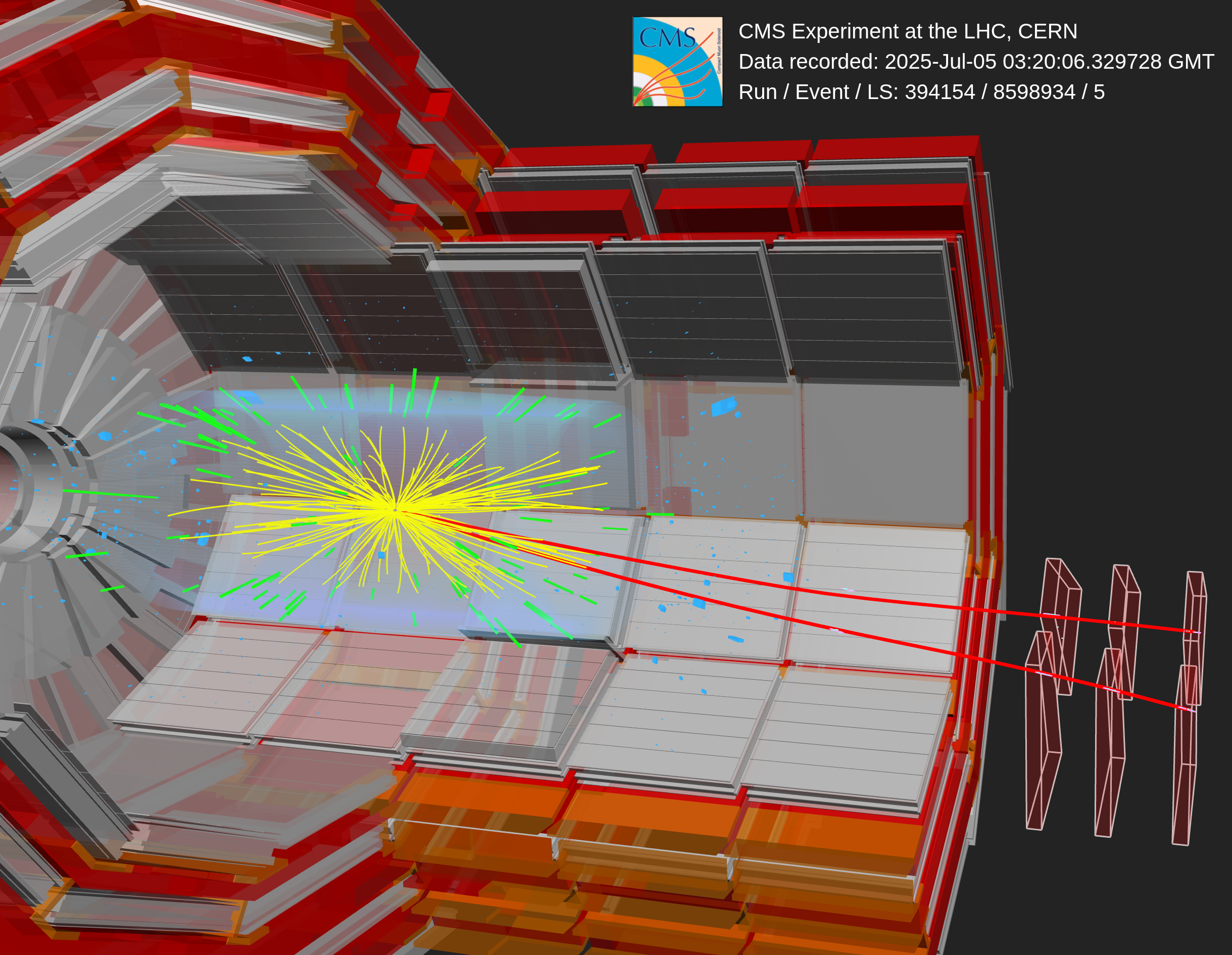
ABOVE: Event display from one of the first oxygen-oxygen collisions. [Credit: Tom McCauley] [Find it here in the CERN archive, and an interactive version here]
“Ideally, for a physicist, we would collide all the ions on the periodic table to test the whole set,” laughs Ivan while acknowledging the complications of making something so complex happen. “Right now we are excited about these collisions – especially the oxygen – as it will help us see if our predictions hold for ions much lighter than the lead ones we have been studying so far. A nucleus of lead is over ten times bigger than that of oxygen, so you’re really looking at completely different sizes!”
Read more about the lead collisions here.
Sometimes, ions passing next to one another exchange a photon. This is because ions are charged objects and so can interact electromagnetically with one another. It is almost as if the LHC provides a bonus collision type – that of photons from ions colliding with ions. This is very interesting for the teams, as these interactions probe the structure of the nucleus in a 'clean' way. 'Clean' in this sense is comparative to interactions with composite particles that are made up of smaller particles. Collisions with composite particles produce hundreds of byproducts that may not be of use. With the collisions of photons from ions however, since photons are not made up of anything smaller, we only get a handful of interesting particles from this type of collision. The photon-ion collisions complement the planned program at the future Electron Ion Collider.
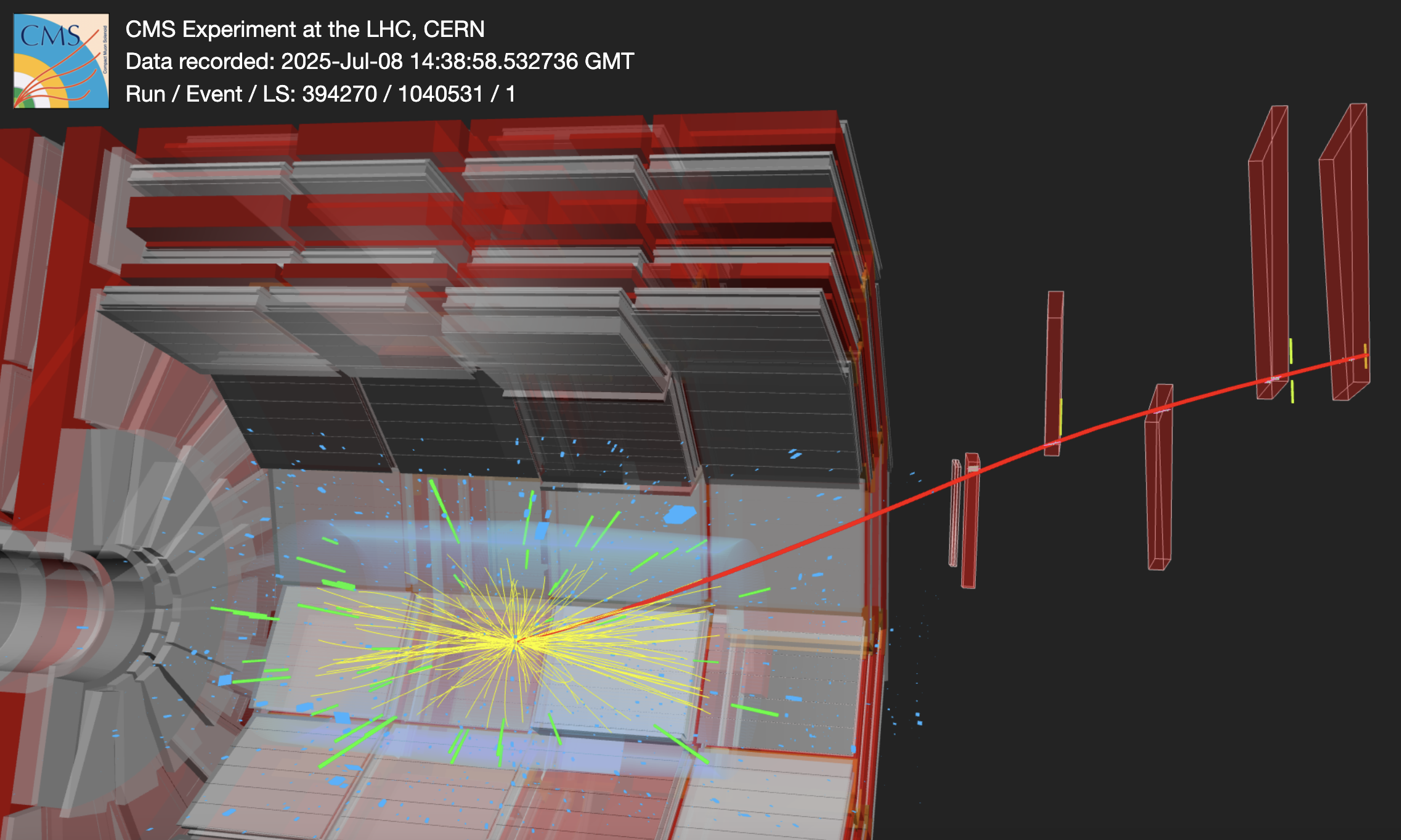
ABOVE: Event display from one of the first neon-neon collisions. [Credit: Tom McCauley] [Find it here in the CERN archive, and an interactive version here]
These data are also vitally important for cosmic ray studies, especially the collisions of protons with oxygen nuclei. Cosmic rays are particles that travel through space at very high energies, and can be made of protons or a range of atomic nuclei. When cosmic rays reach Earth, they interact with the atmosphere by colliding with the gases that make it up, such as oxygen or nitrogen. However, the collisions are difficult to study in the upper atmosphere, and these studies at the LHC are an invaluable opportunity to study scenarios similar to those that happen when the cosmic rays reach Earth.
CMS is collaborating with cosmic ray experiments such as the Pierre Auger Observatory to share the results from the collisions so that these unique events can be studied in the astro-particle field too.
These few days of oxygen and neon collisions are also an invaluable test for similar proposed configurations during the High Luminosity phase of the LHC.
Read More
Run 1 heavy Ion Open Data Release

